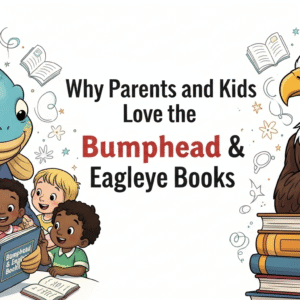
CBD has taken over wellness conversations lately—and for good reason. With all the talk around oils, gummies, capsules, and topicals, many people are curious about how to use CBD safely. But not all CBD products are created equally. Safety comes down to purity, accurate labeling, third-party testing, and proper sourcing. If you’re thinking about trying CBD for daily wellness, knowing how to spot a clean product matters more than you might think. When buying from a CBD online store in Pinellas Park, it’s even more important to understand what to look for before making a purchase.
What Does “Pure CBD” Actually Mean?
Purity refers to how clean the CBD is from contaminants. A pure product contains only cannabinoids and supportive compounds—without leftover solvents, pesticides, or heavy metals. Many CBD brands claim their formulas are “pure,” but unless they have certificates of analysis (COAs) from third-party labs, those claims don’t mean much. You want transparency, not just marketing buzzwords. Purity also involves having the correct concentration of CBD, with no unexpected ingredients or filler oils.
The Role of Third-Party Lab Testing
One of the most reliable ways to confirm safety and purity is through third-party lab testing. These are independent labs that check the contents of a CBD product and provide an unbiased report. This lab report should show cannabinoid levels, confirm the absence of harmful chemicals, and ensure that THC levels meet legal standards. Brands that publish their lab results on their website—or include QR codes on packaging—typically have nothing to hide. If lab reports are missing or hard to access, that’s usually a red flag.
Where Was the Hemp Grown?
The source of the hemp plays a big role in how clean and safe the final CBD product is. Hemp is a bioaccumulator, which means it absorbs substances from the soil, including toxins. Hemp grown in contaminated or unregulated environments might carry heavy metals or other pollutants into the oil. Look for brands that use organically grown hemp from within the United States. This doesn’t just support local farming—it also means the hemp follows higher agricultural standards.
Full-Spectrum vs. Broad-Spectrum vs. CBD Isolate
CBD products generally fall into three categories. Full-spectrum contains all cannabinoids from the plant, including trace amounts of THC. Broad-spectrum has most cannabinoids but no THC. CBD isolate is pure CBD with no other compounds. The right type depends on your comfort level with THC. If you want zero THC in your system, go with a broad-spectrum or isolate. If you’re open to the potential benefits of other cannabinoids working together (sometimes called the entourage effect), a full-spectrum product might suit you better. But either way, check the lab report to confirm what’s in the bottle.
Ingredient Transparency Matters
Some CBD oils and edibles contain extra ingredients like flavorings, sweeteners, or carrier oils. That’s not necessarily a problem, but the ingredient list should be clear and short. You should know what every listed ingredient is and why it’s there. Products with long, complicated ingredient lists or vague descriptions tend to hide fillers or synthetic compounds that don’t support wellness. Go for formulas that keep it simple—CBD, a clean carrier oil, and minimal extras.
Avoid These Red Flags
There are a few warning signs that a CBD product might not be safe. Beware of brands that make exaggerated health claims, like curing diseases or treating serious conditions. These statements aren’t just misleading—they’re not allowed under FDA rules. Also, avoid any products that don’t provide dosing information. If the label doesn’t tell you how much CBD is in each serving, walk away. Confusing or overly complicated packaging can also be a trick to distract from poor quality.
Dosing: How Much CBD Is Right?
Everyone’s body reacts differently to CBD, so there’s no one-size-fits-all amount. If you’re new to it, start with a low dose and observe how your body responds over a few days. Oils with a dropper make it easier to measure and adjust. Edibles tend to be pre-measured but slower to take effect. Too much CBD can make you feel drowsy or unsettled, while the right amount should feel natural and calming. Always give it time—rushing the dose usually leads to discomfort rather than relief.
Brand Reputation and Reviews
Before buying CBD, take a few minutes to check out the brand’s reputation. What do other customers say? Are reviews honest and detailed, or do they sound overly polished? A consistent pattern of satisfied users is a good sign. Brands that have been around for years and maintain active customer service also tend to be more trustworthy. Don’t get pulled in by flashy marketing—solid customer experiences often speak louder than hype.
Why Storage and Packaging Matter
How a CBD product is stored can affect its safety and quality over time. CBD is sensitive to heat, light, and air. Look for products in dark glass bottles or secure containers that block sunlight and oxygen. Once opened, keep them in a cool, dry place. Poor packaging can lead to product degradation, which reduces its potency and may even change its chemical makeup. Good packaging protects the contents and shows that the brand takes long-term quality seriously.
Ask Questions Before Buying
Whether you’re shopping in person or from an online store, don’t be afraid to ask questions. Reliable sellers will be ready to answer things like: Where was the hemp grown? Can I see the lab report? How much CBD is in this? If the person or company selling the product seems evasive or unsure, take that as a warning. It’s your body—you deserve clear, honest answers before putting something new into your routine.
Wrapping It Up:
There’s no need to overcomplicate the process. Stick with well-known brands that offer transparency, clean ingredients, and third-party testing. Pay attention to the source of the hemp and how the product is made. Avoid anything that feels vague, overly hyped, or too good to be true. Pure, safe CBD should feel easy to understand and trustworthy from the first look at the label to the final drop or bite.


